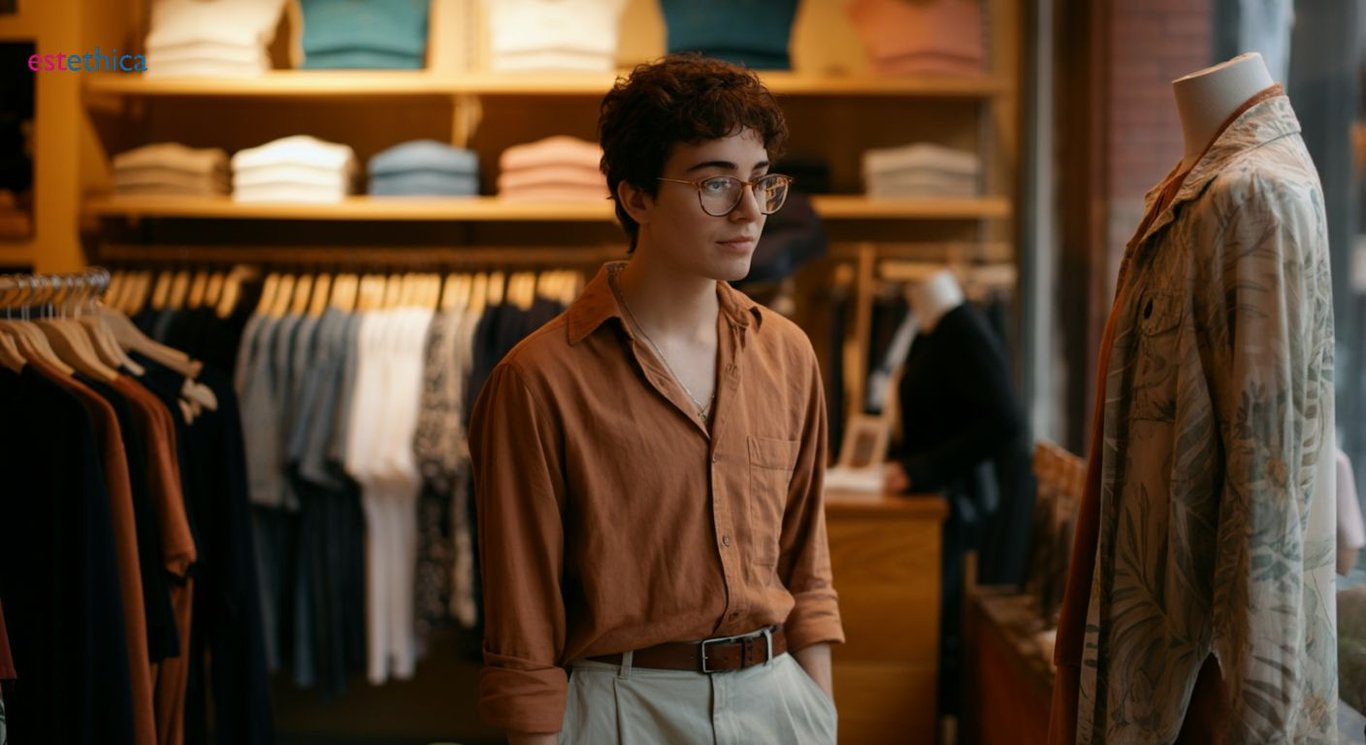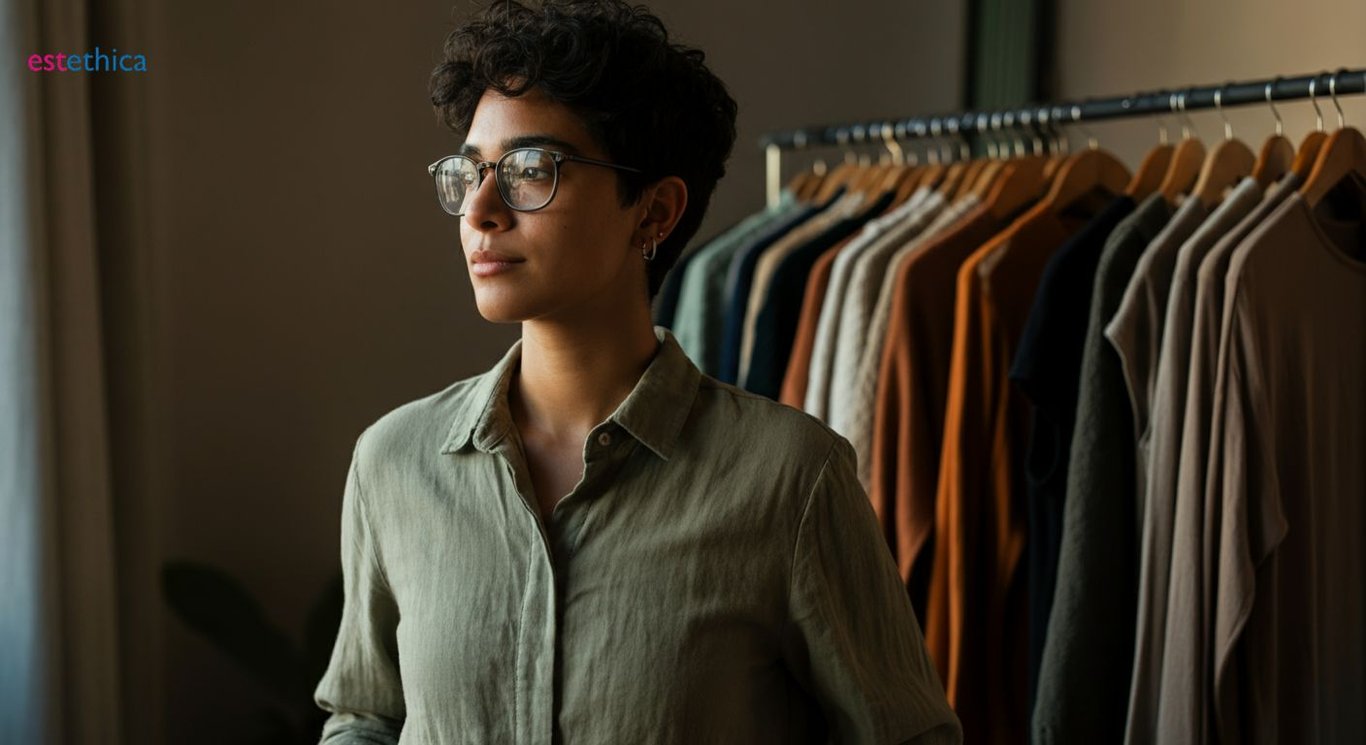Mastering Sustainable Fashion: Your Path to Eco-Friendly Living
Discover the world of sustainable fashion and make eco-friendly choices for a stylish yet responsible wardrobe.
Sustainable fashion is more than just a trend; it's a movement towards more ethical and eco-friendly choices in the way we produce and consume clothing. This guide will unlock the principles of sustainable fashion, helping you make informed decisions and find brands committed to decreasing their environmental impact. By understanding sustainable fashion, you're setting the stage for a more conscious and responsible wardrobe.
Understanding Sustainable Fashion: What It Really Means
Defining Sustainable Fashion and Its Historical Roots
Sustainable fashion refers to practices that prioritize environmental and social responsibility in the fashion industry. This includes using organic materials, minimizing carbon footprints, and ensuring fair labor conditions. Historically, the movement gained momentum in the late 20th century as awareness of environmental issues grew.
Core Principles of Sustainable Fashion
- Use of eco-friendly materials like organic cotton and recycled fabrics.
- Commitment to reducing waste through upcycling and zero waste practices.
- Ensuring ethical labor practices and fair trade standards.
Brands today are increasingly adopting these principles to meet consumer demand for more responsible fashion choices.
Steps to Embrace Sustainable Fashion
- Research brands that prioritize sustainability and ethical practices.
- Choose clothing made from organic or recycled materials.
- Support local and fair trade apparel initiatives.
By following these steps, consumers can make informed decisions that contribute to a more sustainable fashion industry. For more insights on eco-friendly fashion choices, visit Unlocking estethica: Your Path to Eco-Friendly Fashion Choices.

How to Choose Eco-Friendly Clothing for Your Wardrobe
Identifying Sustainable Fabrics and Certifications
When selecting eco-friendly clothing, understanding the materials is crucial. Opt for fabrics like organic cotton, hemp, and Tencel, which are produced with minimal environmental impact. For instance, organic cotton uses less water and avoids harmful pesticides, making it a sustainable choice. Hemp is another excellent option due to its rapid growth and low resource requirements.
Certifications can guide you in identifying genuinely sustainable products. Look for labels such as GOTS (Global Organic Textile Standard) or OEKO-TEX, which ensure the fabric meets specific environmental and social criteria. These certifications provide assurance that the clothing is made responsibly.
Supporting Ethical Fashion Brands
- Research brands committed to ethical labor practices and transparency.
- Choose companies that prioritize fair wages and safe working conditions.
- Support brands that invest in community development and environmental initiatives.
Brands like Patagonia and Eileen Fisher are known for their dedication to ethical practices, offering consumers peace of mind when purchasing their products. By supporting such brands, you contribute to a more equitable fashion industry.
Steps to Build a Sustainable Wardrobe
- Start by auditing your current wardrobe to identify sustainable pieces.
- Gradually replace fast fashion items with eco-friendly alternatives.
- Prioritize quality over quantity to ensure longevity and reduce waste.
Building a sustainable wardrobe is a gradual process. Begin by evaluating what you already own and make conscious choices to replace items with sustainable options over time. This approach not only benefits the environment but also promotes a more mindful consumption pattern.

Top Ethical Fashion Brands Making a Difference Today
Innovative Approaches to Sustainable Fashion
Ethical fashion brands are redefining the industry by integrating innovative approaches to sustainability. For example, Stella McCartney is renowned for its commitment to using vegan materials and promoting cruelty-free fashion. This brand has set a benchmark for others by proving that luxury and sustainability can coexist.
Another brand, Reformation, focuses on transparency and eco-friendly practices. They provide detailed information about the environmental impact of each garment, allowing consumers to make informed choices. This level of transparency is rare in the fashion industry and sets Reformation apart as a leader in sustainable fashion.
Pioneers in Eco-Friendly Clothing
- Patagonia: Known for its environmental activism and use of recycled materials.
- Everlane: Offers radical transparency about production costs and ethical labor practices.
- People Tree: Pioneers in fair trade apparel, ensuring fair wages and safe working conditions.
These brands not only prioritize eco-friendly materials but also advocate for social responsibility, making them pioneers in the ethical fashion movement.
Steps to Support Ethical Fashion Brands
- Research brands that align with your values and sustainability goals.
- Choose products that use organic or recycled materials.
- Support brands that are transparent about their production processes and labor practices.
By supporting these ethical fashion brands, consumers can contribute to a more sustainable and equitable fashion industry. This not only benefits the environment but also promotes fair labor practices globally.

Affordable Ethical Fashion Options for Conscious Shoppers
Exploring Budget-Friendly Sustainable Fashion Choices
Conscious shopping doesn't have to be expensive. Many brands offer affordable sustainable fashion options that align with eco-friendly values. For instance, brands like Pact and Thought Clothing provide organic clothing at accessible prices, making it easier for consumers to make ethical choices without overspending.
Affordable Ethical Fashion Strategies
- Thrift shopping: A sustainable way to find unique, budget-friendly pieces.
- Clothing swaps: Exchange items with friends to refresh your wardrobe sustainably.
- DIY upcycling: Transform old clothes into new styles, reducing waste.
These strategies not only save money but also promote a circular fashion economy, reducing the demand for new resources.
Steps to Discover Affordable Ethical Brands
- Research online marketplaces that specialize in sustainable fashion.
- Follow social media accounts dedicated to eco-friendly fashion deals.
- Join online communities focused on sharing sustainable fashion tips.
By following these steps, shoppers can uncover hidden gems in the world of affordable ethical fashion, ensuring their wardrobe choices reflect their values without compromising on style or budget.
The Benefits of Sustainable Fashion
Environmental Impact and Conservation
Sustainable fashion significantly contributes to environmental conservation by reducing pollution and waste. For example, eco-friendly clothing brands often use organic materials that require fewer chemicals and less water, minimizing environmental damage. Additionally, sustainable practices like upcycling and recycling help decrease landfill waste, promoting a circular economy. A study by the Ellen MacArthur Foundation highlights that adopting circular fashion models could reduce carbon emissions by 44% by 2030.
Personal Health and Well-being
- Organic clothing is free from harmful chemicals, reducing skin irritation and allergies.
- Eco-friendly fabrics like bamboo and hemp are breathable, enhancing comfort.
- Wearing sustainable fashion can boost mental well-being by aligning with ethical values.
Choosing sustainable fashion not only benefits the planet but also promotes personal health. By opting for organic clothing, individuals can avoid exposure to toxic substances commonly found in conventional textiles.
Economic Savings in the Long Run
- Investing in high-quality sustainable pieces reduces the need for frequent replacements.
- Durable materials ensure longevity, offering better value over time.
- Supporting local ethical brands can stimulate regional economies.
While sustainable fashion might seem costly initially, it offers economic advantages in the long run. High-quality, durable clothing reduces the frequency of purchases, ultimately saving money. Moreover, supporting local ethical fashion brands can contribute to economic growth within communities.
Challenges and Future Directions in Sustainable Fashion
Overcoming Barriers in Sustainable Fashion
Despite the growing interest in sustainable fashion, several challenges hinder its widespread adoption. One significant barrier is the higher cost of eco-friendly clothing compared to fast fashion. This price difference often deters consumers who prioritize affordability over sustainability. Additionally, scalability remains a concern as ethical fashion brands struggle to meet the demands of a global market without compromising their values.
Consumer awareness is another critical challenge. Many individuals are still unaware of the environmental and social impacts of their clothing choices. Educating consumers about the benefits of sustainable fashion and how to choose eco-friendly options is essential for driving change. For example, campaigns that highlight the environmental savings of organic clothing can encourage more informed purchasing decisions.
Innovations Shaping the Future of Sustainable Fashion
- Development of new sustainable materials like lab-grown leather and biodegradable fabrics.
- Advancements in recycling technologies to create closed-loop systems.
- Integration of digital platforms to enhance transparency and traceability.
These innovations are paving the way for a more sustainable fashion industry. For instance, lab-grown leather offers a cruelty-free alternative to traditional leather, reducing the environmental impact of livestock farming. Similarly, advancements in recycling technologies enable the creation of closed-loop systems, where materials are continuously reused, minimizing waste.
Predicted Trends in Sustainable Fashion
- Increased collaboration between fashion brands and technology companies.
- Growth of rental and resale markets as alternatives to traditional retail.
- Expansion of ethical fashion brands into mainstream markets.
The future of sustainable fashion looks promising with these predicted trends. Collaborations between fashion brands and technology companies can lead to innovative solutions for reducing environmental impact. The rise of rental and resale markets offers consumers more sustainable options, while the expansion of ethical fashion brands into mainstream markets increases accessibility for all.
Innovative Approaches to Sustainable Fashion
Affordable Ethical Fashion Options for Conscious Shoppers
Frequently Asked Questions
What is sustainable fashion and why is it important?
How can I choose eco-friendly clothing for my wardrobe?
What are some affordable ethical fashion options for conscious shoppers?
Why should I support ethical fashion brands?
What are the benefits of sustainable fashion?
Discover the path to 'Healthy Beauty' with estethica's expert care. Call now for your free consultation and take the first step towards a more confident you!
📞 Call for Your Free Consultation